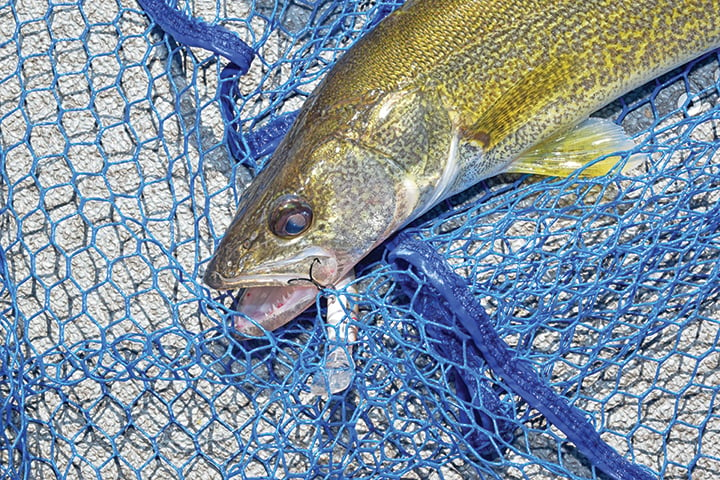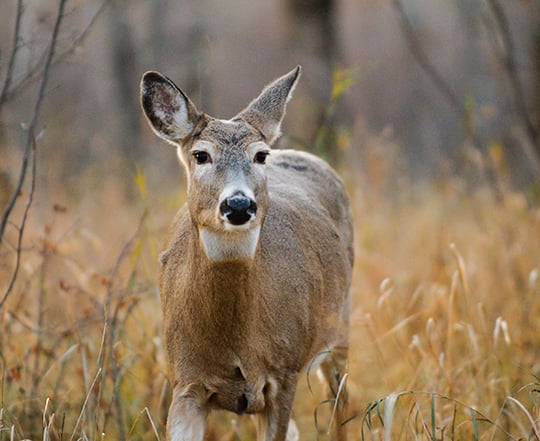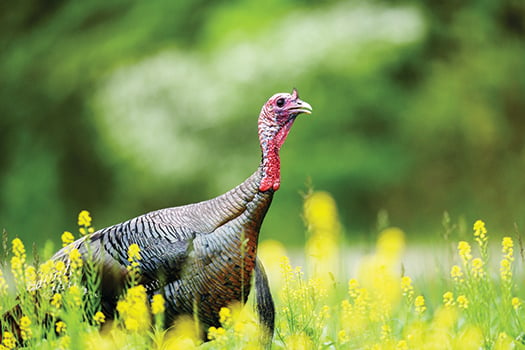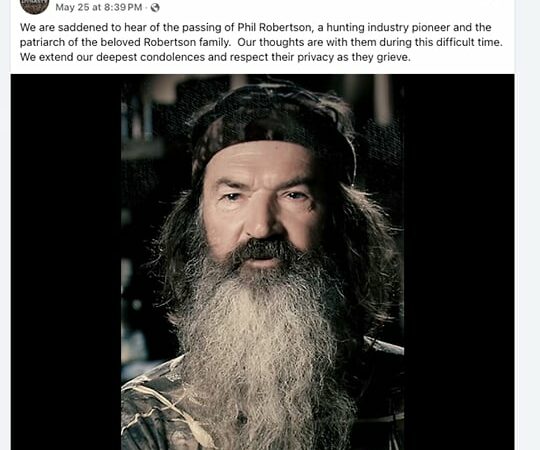Shift your focus, at least a little bit, toward ‘hunting’ for big walleyes this fall – Outdoor News
Outdoor News may earn revenue from products shown on this page by participating in affiliate programs. Click here to learn more.
As temperatures fall and leaves start to turn, lots of sportsmen in the Great Lakes region head to the woods for some hunting. This year consider delaying the start of your hunting season and go “hunting” for some of the biggest walleye you will catch all season.
Fall makes for great walleye fishing for a few reasons. First, most of the bait that hatched in the spring has been depleted from vigorous feeding from predator fish during summer. Secondly, walleyes are feeding heavily to store calories for the upcoming winter and spawning season.
Third, walleyes are usually over deeper water and are easy to see on electronics. Fourth, walleyes, especially large ones, are usually traveling in schools hunting for forage. Lastly, walleyes are fairly easy to catch once they are located. All these factors add up to make some of the best fishing of the year.
Locations
Following a few simple location keys is all that’s needed to get on some great fall fishing.
Walleye start to head toward the areas where the baitfish are plentiful and where walleyes will spawn in the spring. Deeper water (over 25 feet) seems to hold more fish at this time of year. Deep water holds baitfish and tends to stay more stable in fall. Look for deep water near incoming current such as rivers, creeks or shallow rock areas in the main lake.
One of my main keys for location is to spend some time searching for the correct water color. In the fall I definitely avoid “brown” dirty water. Even though you may mark lots of fish in “brown” water, getting them to bite is usually a fruitless effort.
MORE FISHING FEATURES FROM OUTDOOR NEWS:
Al Lindner: There’s much to love about fishing the heart of October
There are quiet lakes and good fishing to be had across Michigan in the fall
Fishing for crappies in unsettled weather requires finesse
I also try to avoid “blue” water. Blue water is usually too clear and void of plankton to attract minnows. My favorite water color at any time, but especially in fall is what I call “Erie perfect.” Look for green-colored water where you can still see the prop on your main engine and then start looking for fish on the sonar.
In fall it’s critical that you “hunt” before fishing. Walleyes are in tight schools in small areas and you can spend a lot of time fishing where there are no fish. Use your sonar to search for fish at a quick pace before putting lures in the water.
When you mark fish, save a waypoint on your GPS and get ready to fish. Also be sure to note the depth of the fish and be sure to run your baits about 2 to 8 feet above the fish. Walleyes that are suspended at least 6 feet above the bottom are usually aggressive biters, and the higher the fish are in the water column the more active they are.

Lures
At the start of the fall season, we can catch fishing via most walleye fishing methods. Trolling with spinner/crawler combos as well as trolling spoons work in the waters of early fall. But as the water temperature drops below 60 degrees, the best presentation for big walleye is trolling with long, thin crankbaits that work well at slow to medium speeds.
Baits such as the Reef Runner, Deep Husky Jerk, Top 20, Bandits, Reapers, Deep Rogues, and Deep Tail Dancers have proven to be great producers over the years.
These lures work great at typical fall trolling speeds of around 1 mph to 2 mph. Since fall water is usually clear, running the lures to the side behind inline boards will help anglers when running multiple lures, and will increase the number of bites you will get.
Be sure to let the fish “hang” on the planer board for a while before beginning to reel the fish in. Fall fish are not always aggressive and letting them pull against the board for 10 to 15 seconds helps guarantee that all the stretch is out of the line and the hooks are buried in the fish’s mouth.
I am not a big believer in lure color most days, but history has shown that baits with a purple, red, orange or pink bottom will catch many more fish most days than lures without these colors on bottom. The amount of color does not need to be large, but it needs to be visible to the fish as they look up at the lure.
Experiment with different side colors during the day but be sure to focus more on the belly color.
Favorite places
Some of my favorite spots for fall trophy walleye include Saginaw Bay out of Linwood, Mich., the drowned river mouth lakes in western Lower Michigan (Pentwater, Muskegon, Mona, White, Manistee, Portage, etc.), Tawas Bay, Bay of Quinte, Lower Detroit River, Saginaw Bay, and the Ohio waters of Lake Erie.
Areas in the other Great Lakes states that fit the criteria listed above should also see good walleye fishing in the fall.
If I had to pick my favorite place to spend October and November it would be Lake Erie between Port Clinton and Vermillion, Ohio.
This area hosts a huge migration of giant walleyes returning to the Western Basin from their summer feeding areas in the Central and Eastern basins. These fish are large and following baitfish that are heading to the rivers in the area.
My favorite place to launch is at the public launch on the Huron River in the town of Huron.
Fish are located all the way east to Vermillion and all the way west to Sandusky. Fish are typically in 25 to 40 feet of water and when found in the clear, green water they usually are willing to bite.
Whether you call them hogs, toads, sleds, or simply a trophy, fall walleyes provide the best opportunity to catch your largest fish of the year, and lots of big fish.
Use the tips listed here, dress warm and you may find a new type of “hunting” to enjoy in the fall!







